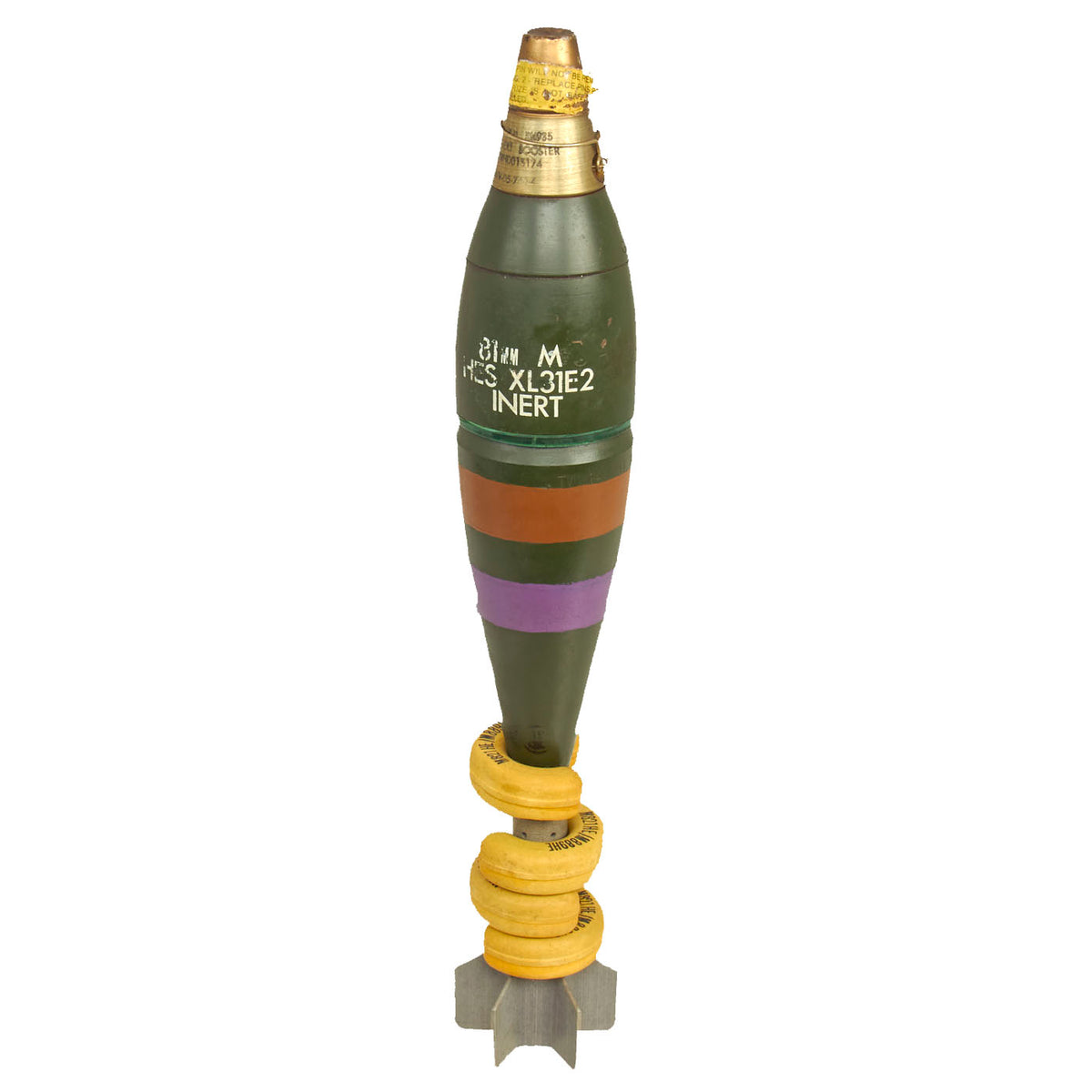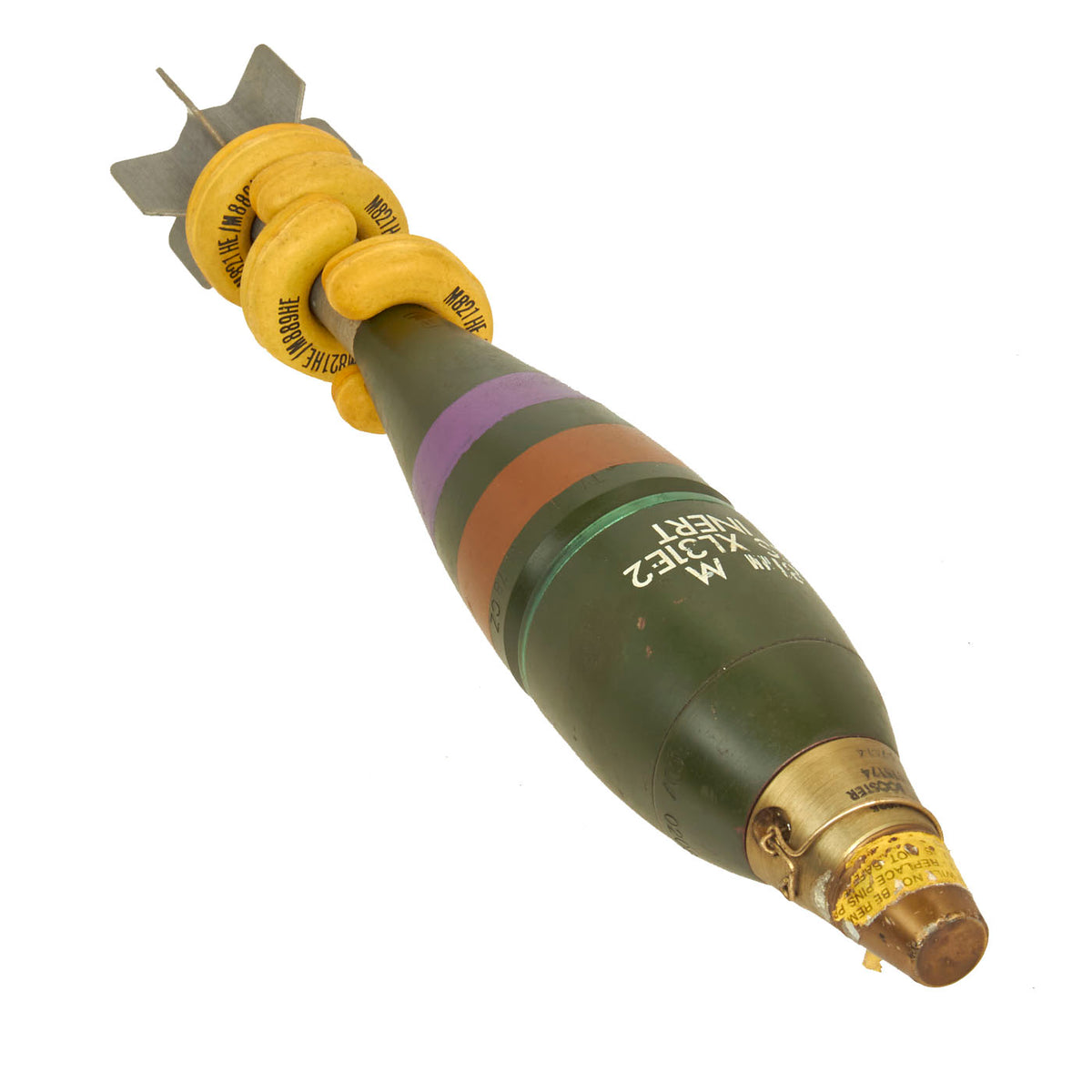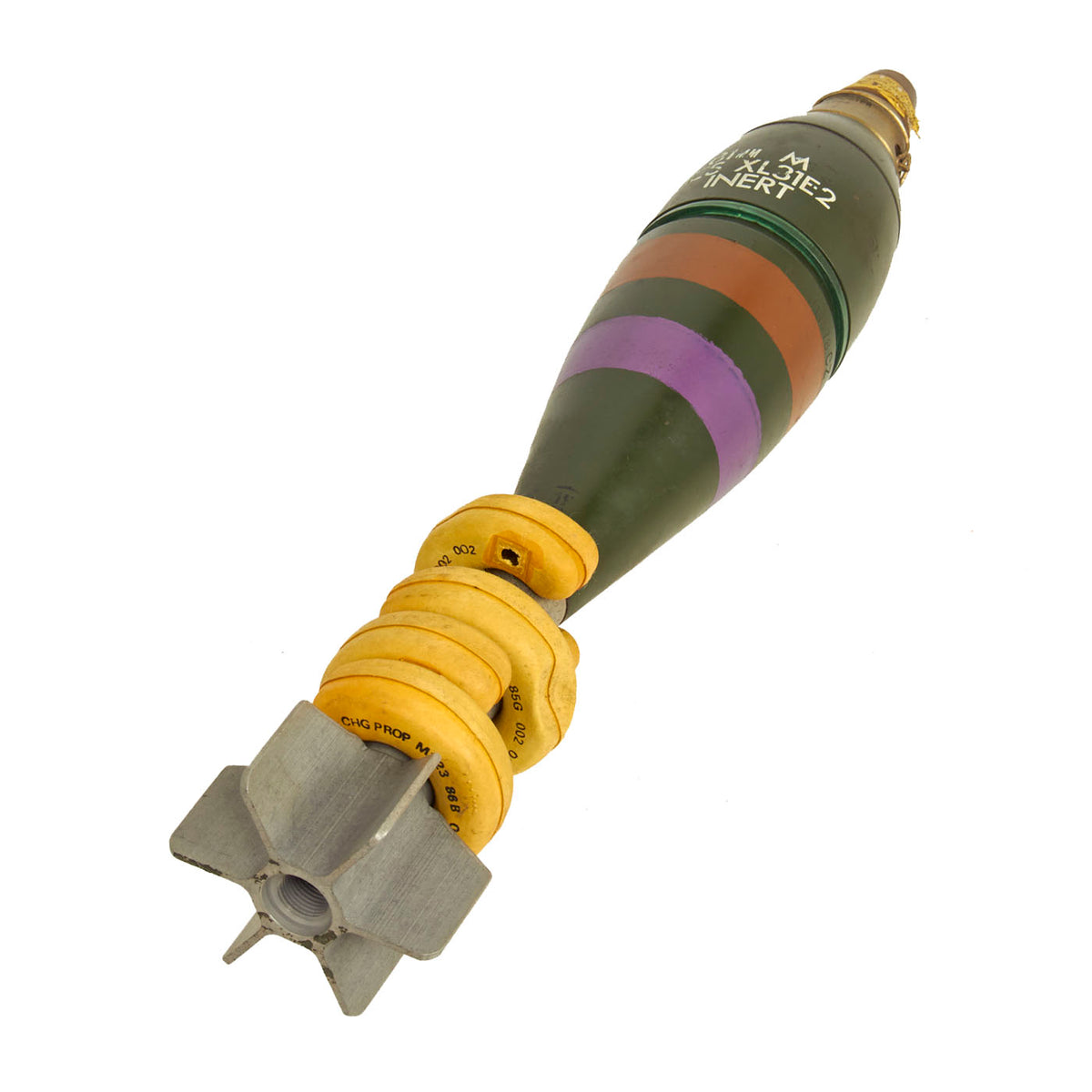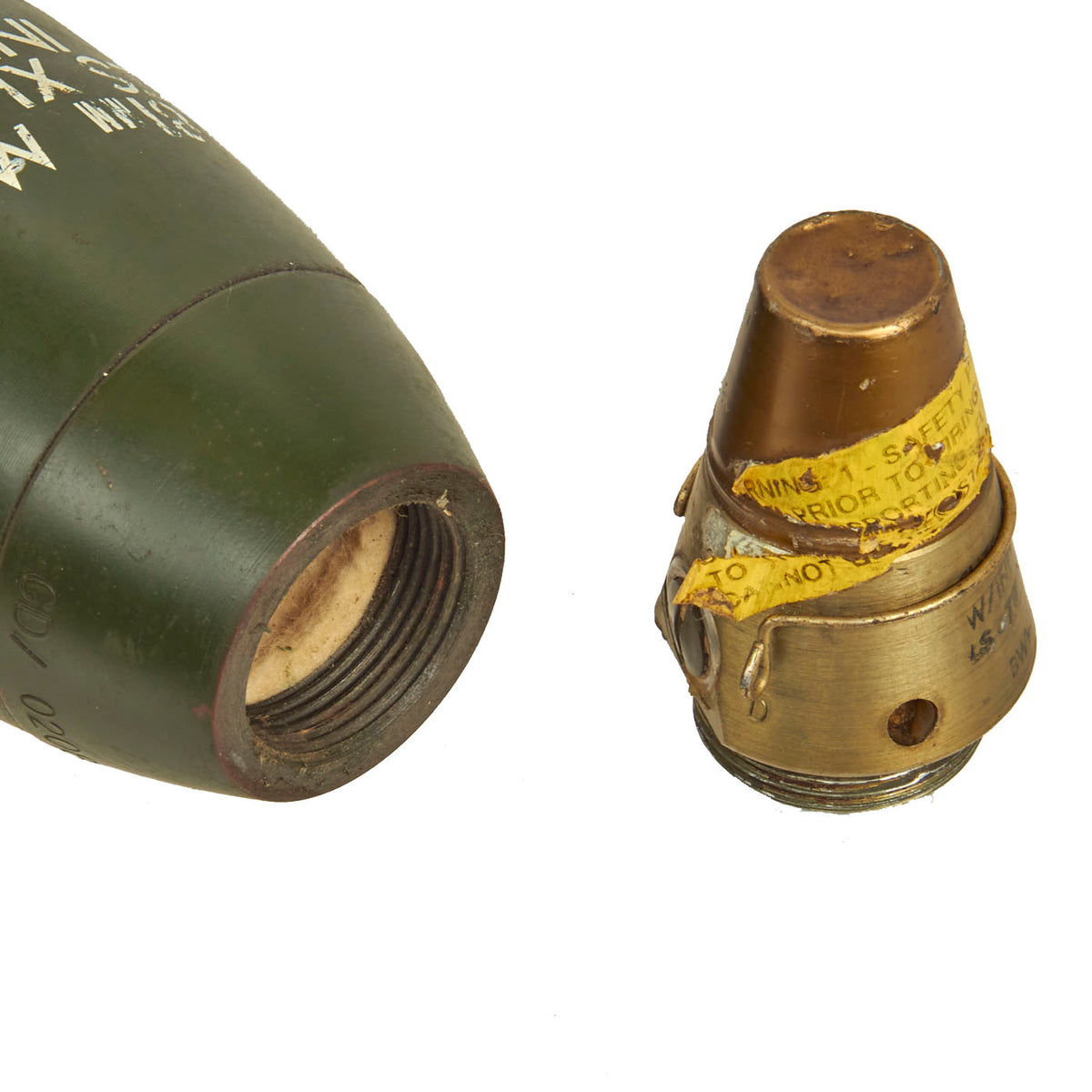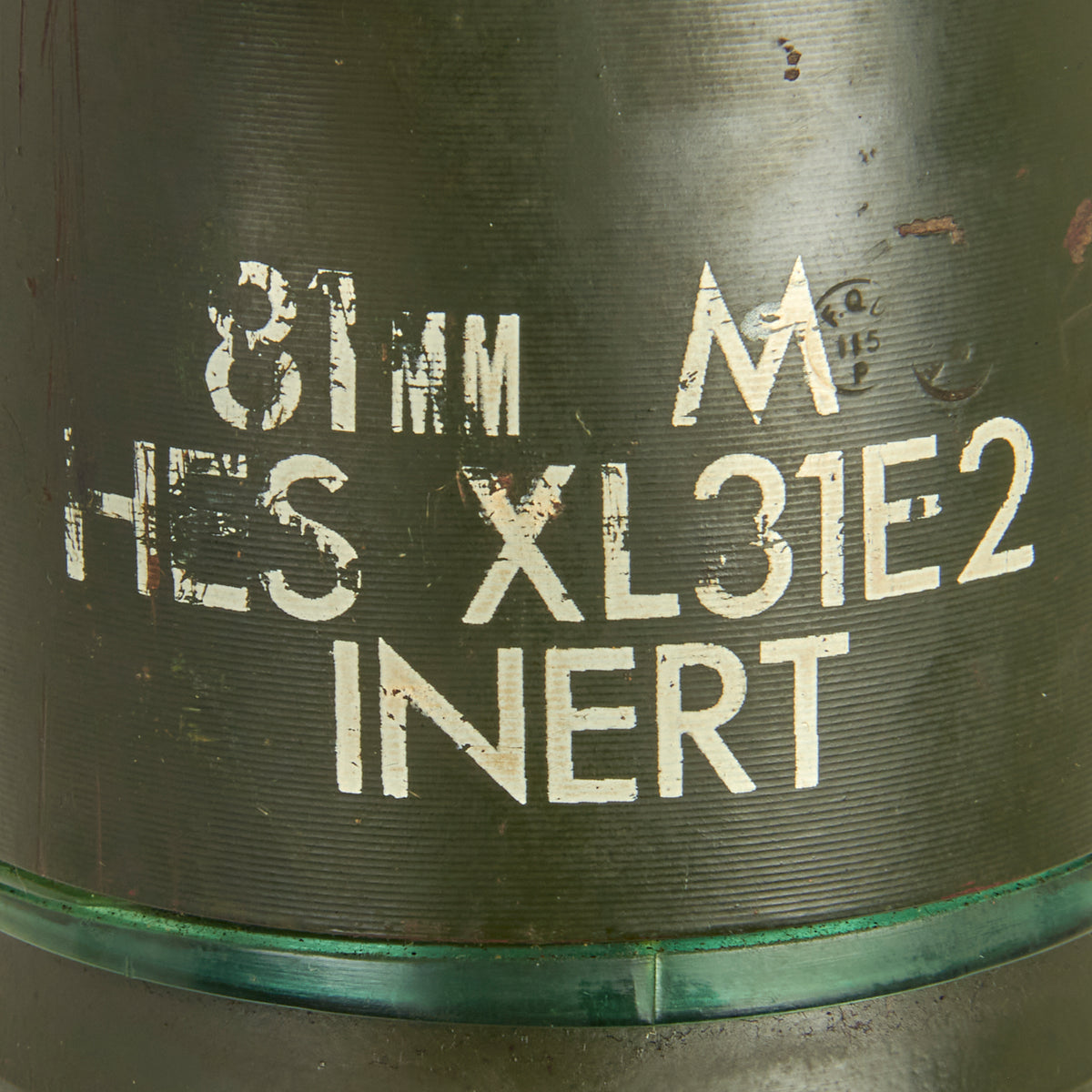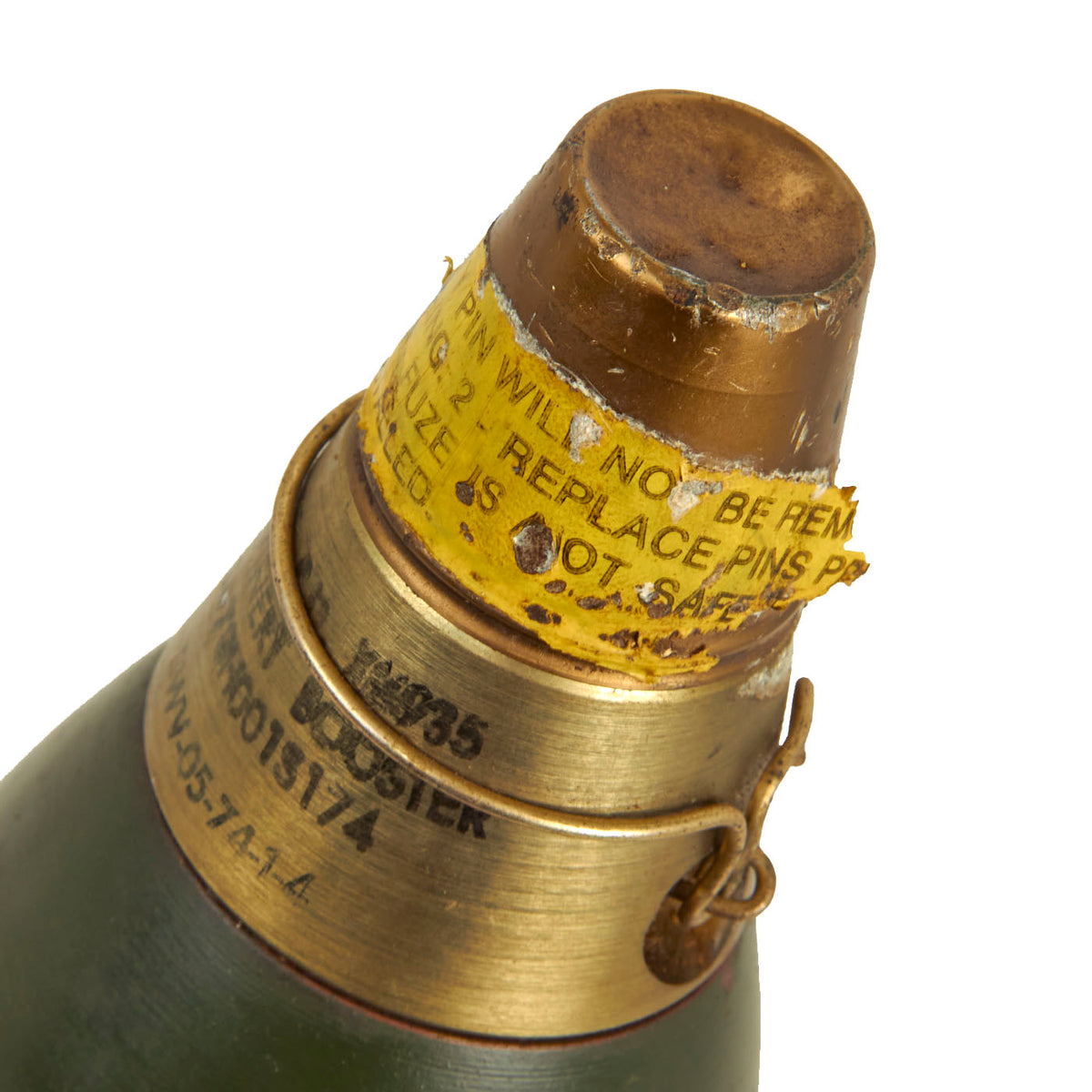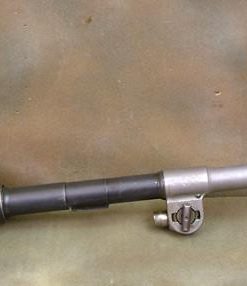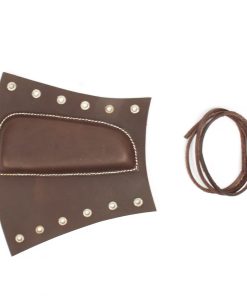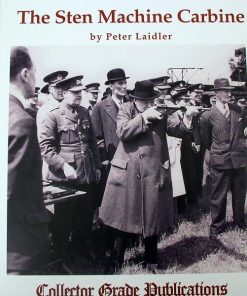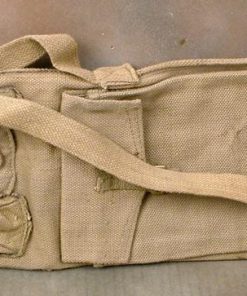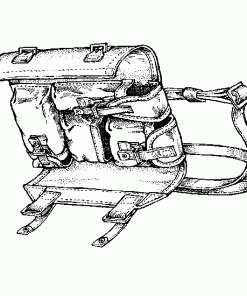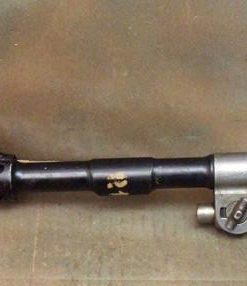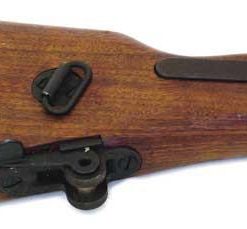Original British Cold War Era Inert 81mm XL31E2 Round With Prop “Donut” Charges For The M252 Mortar System Original Items
$ 495,00 $ 148,50
Original Item: Only One Available. This mortar round is totally non-functional and inert, having been deactivated according to specifications outlined by the BATF (Bureau of Alcohol, Tobacco, Firearms and Explosives). It is totally inert, and cannot be converted to an explosive device.
Not Available For Export
The M252 81 mm medium weight mortar is a British-designed smooth bore, muzzle-loading, high-angle-of-fire weapon used for long-range indirect fire support to light infantry, air assault, and airborne units across the entire front of a battalion zone of influence. In the U.S. Army and U.S. Marine Corps, it is normally deployed in the mortar platoon of an infantry battalion.
This British XL3E2 HE round is in great condition and retains almost all original markings and paint. The round measures approximately 19” in length and features of lovely deactivated Point Denoting Fuse with original arsenal sticker. The donut charges on this example are labeled as being M223 prop charges with 4 in total.
The range of a mortar is controlled by the number of propellant “C-charges” attached. A charge is a semi-circular donut of nitrocellulose, which resembles a puffy letter “C.” A round for the M252 mortar comes with four charges attached. Longer-range shots require more propellant than can fit in the tail of the round, hence the necessity of external charges.
When the target is ranged, the first assistant ammunition bearer adjusts the amount of propellant by removing C-charges from the projectile. The mortar squad leader verifies the number of charges; then the assistant gunner drops the round down the muzzle of the tube. The round, pulled by gravity, accelerates down the smooth bore of the mortar until the primer (in the base of the tail boom of the round) strikes the firing pin located in the bottom of the mortar tube. The primer detonates, igniting the charge in the tail fin, which in turn ignites the C-charges on the round. The C-charges ignite, releasing hot, expanding gas which pushes against the obturating ring on the projectile, sealing the gas behind the projectile. The pressure from the expanding gas accelerates the projectile until it leaves the end of the tube.
This is a lovely example and comes more than ready for further research and display.
Fast Shipping with Professional Packaging
Thanks to our longstanding association with UPS FedEx DHL, and other major international carriers, we are able to provide a range of shipping options. Our warehouse staff is expertly trained and will wrap your products according to our exact and precise specifications. Prior to shipping, your goods will be thoroughly examined and securely secured. We ship to thousands clients each day across multiple countries. This shows how we're dedicated to be the largest retailer on the internet. Warehouses and distribution centres can be located throughout Europe as well as the USA.
Note: Orders with more than one item will be assigned a processing date depending on the item.
Before shipping before shipping, we'll conduct a thorough inspection of the items you have ordered. Today, the majority of orders will be delivered within 48 hours. The delivery time will be between 3-7 days.
Returns
The stock is dynamic and we cannot completely manage it because multiple stakeholders are involved, including our factory and warehouse. So the actual stock may alter at any time. It's possible that you may not receive your order once the order has been made.
Our policy is valid for a period of 30 days. If you don't receive the product within 30 days, we are not able to issue a refund or an exchange.
You can only return an item if it is unused and in the same state as the day you received it. You must have the item in its original packaging.
Related products
Uncategorized
Uncategorized
Uncategorized
Uncategorized
Uncategorized
Uncategorized
Uncategorized
Uncategorized
Book: Small Arms ID by Ian Skennerton: .303 Rifle, No. 1, S.M.L.E Marks II & III New Made Items
Uncategorized
Australian WWII Owen MK1 Machine Carbine SMG Custom Fabricated Replica with Sling Original Items
Uncategorized
Uncategorized
Uncategorized
Uncategorized
Uncategorized
